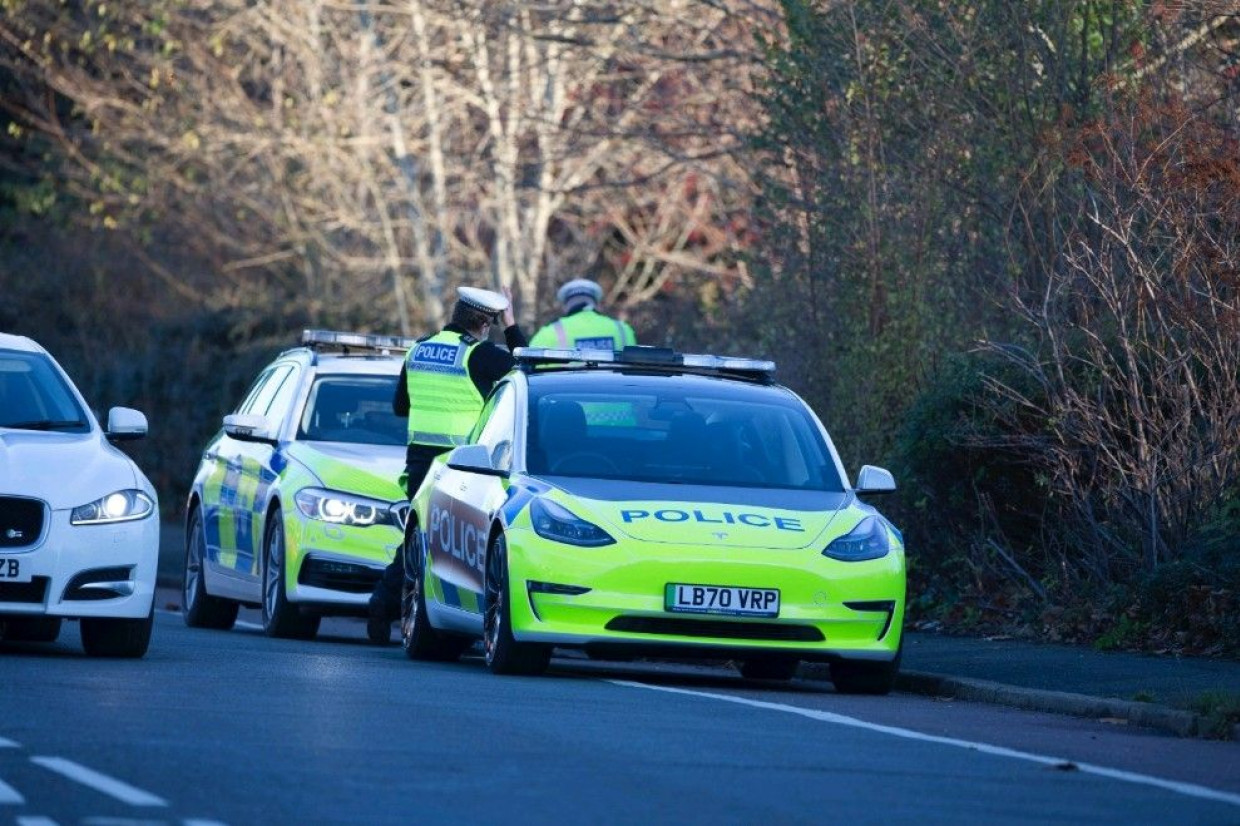
An electric police car? Stop right now with the jokes about running out of juice just as it’s about to catch the criminals. According to research by Tesla, electric cars could be the future of (silent) police pursuits.
The electric car maker has been trialling a number of Model 3s across forces in the UK over the past nine months. It has now revealed its specially modified Tesla Model 3 police cars are capable of over 200 miles of blue light advance driving.
Its research suggests that the Model 3 is capable of running for more than four hours on active deployment under advanced driving conditions - and that the average blue light run in the UK is around seven to 15 minutes in total.
The test also concluded that onboard surveillance systems have little impact on the car’s battery, with Tesla estimating that the ANPR system would only take a few miles off the battery range if used for a typical three-hour shift.
Highlighting that battery conservation techniques could extend range significantly, Tesla’s emergency services lead, Max Toozs-Hobson, highlighted the option of using the Model 3’s power-limited ‘Chill Mode’ as well as its acceleration limiter to reduce battery consumption in non-emergency situations.
The adaptations also take advantage of Tesla’s over-the-air-update facilities, with police forces able to use new software to send directions to emergencies direct to the Model 3’s infotainment screen.
Tesla also says the Model 3 police car proved to be cost efficient. After 15,000 miles the car required new brakes and tyres but limited servicing compared to traditional, combustion-engined police cars. It’s ‘fuelling’ costs were also significantly lower.
Tesla will continue to work with police forces throughout 2022 in order to gain more understanding requirements.
As well as testing police cars, Tesla has also run trials for first response cars with Avon Fire and Rescue.
The fire service tested four, blue light enabled Model 3s, with officers and fleet staff spending time driving the vehicle on a variety of roads in all weather conditions.
“This trial with Tesla offered us the opportunity to understand their vehicles and will play a key role in our decision making in the future,” said Brian Harwood, AF&RS head of transport.
“The vehicle’s performed exceptionally well and every user has reported how responsive and safe the vehicle felt under all conditions.”
Avon Fire and Rescue is continuing to make changes in order to achieve Net Zero carbon emissions by 2030. By testing a number of electric cars the force is adapting its service in order to reduce carbon emissions over the coming years.

